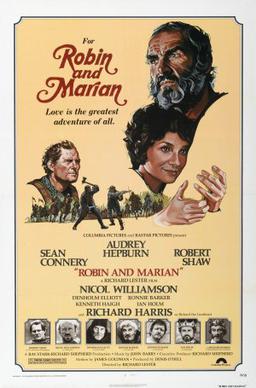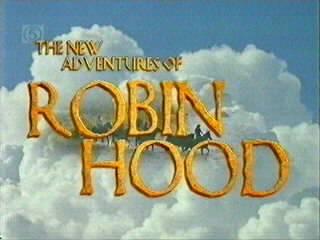
Ivanhoe: A Romance by Walter Scott is a historical novel published in three volumes, in 1819, as one of the Waverley novels. It marked a shift away from Scott's prior practice of setting stories in Scotland and in the more recent past. It became one of Scott's best-known and most influential novels.

Eleanor, Fair Maid of Brittany, also known as Damsel of Brittany, Pearl of Brittany, or Beauty of Brittany, was the eldest daughter of Geoffrey II, Duke of Brittany, and Constance, Duchess of Brittany. Her father, Geoffrey, was the fourth son of Henry II, King of England.

Maid Marian is the heroine of the Robin Hood legend in English folklore, often taken to be his lover. She is not mentioned in the early, medieval versions of the legend, but was the subject of at least two plays by 1600. Her history and circumstances are obscure, but she commanded high respect in Robin’s circle for her courage and independence as well as her beauty and loyalty. For this reason, she is celebrated by feminist commentators as one of the early strong female characters in English literature.

Robin and Marian is a 1976 romantic adventure film from Columbia Pictures, shot in Panavision and Technicolor, that was directed by Richard Lester and written by James Goldman after the legend of Robin Hood. The film stars Sean Connery as Robin Hood, Audrey Hepburn as Lady Marian, Nicol Williamson as Little John, Robert Shaw as the Sheriff of Nottingham, Richard Harris as Richard the Lionheart, and Denholm Elliott as Will Scarlet. It also features comedian Ronnie Barker in a rare film role as Friar Tuck. Robin and Marian was filmed in Zamora, as well as Artajona, Urbasa, Quinto Real and Orgi, all small medieval villages in Navarre, Spain. It marked Hepburn's return to the screen after an eight-year absence.
Alan-a-Dale is a figure in the Robin Hood legend. According to the stories, he was a wandering minstrel who became a member of Robin's band of outlaws, the "Merry Men".
King Arthur's Disasters is a British animated series which first aired on CITV. Co-created by Paul Parkes and Will Ashurst, the series follows and depicts attempts by King Arthur, assisted by the wizard Merlin, to woo the beautiful self-obsessed Princess Guinevere. Due to the popularity of the show, it was picked up for a second series which began transmission on CITV from 6 November 2005. Both were executive-produced by Genevieve Dexter at Cake Entertainment.

The New Adventures of Robin Hood is an action adventure television series that premiered on January 13, 1997, on TNT. The show was based on the legend of Robin Hood, the English folk hero, and was filmed in Vilnius, Lithuania. It was produced and distributed by Dune Productions, M6, and Warner Bros. International.

The folkloric hero Robin Hood has appeared many times, in many different variations, in popular modern works.
Marsha Canham is a Canadian writer of historical romance novels since 1984. She has won two Romantic Times Lifetime Achievement Awards, as well as multiple awards for individual books including Best Historical of the Year, Best Medieval of the Year, Best book of the Year, Storyteller of the Year, Best Swashbuckler of the Year.

Richard I of England has been depicted many times in romantic fiction and popular culture.

John of England has been portrayed many times in fiction, generally reflecting the overwhelmingly negative view of his reputation.

The Outlaws of Sherwood is a retelling of the legend of Robin Hood by Robin McKinley. In McKinley's afterword, she says, "The retellings through the centuries have echoed concurrent preoccupations." The story includes both the traditional Robin Hood characters — Little John, Much, Friar Tuck, Marian and Alan-a-dale — and characters of McKinley's own invention. Notably, three of the most important characters are women, all of whom escape marriage to prospective spouses chosen by their fathers.
This is a list of books by Mercedes Lackey, arranged by collection.

Robin Hood is a fictional character appearing in media published by DC Comics, based on the legendary character of the same name. The character debuted in New Adventure Comics vol. 1 #23, and was created by Sven Elven.

Lady of the Forest: A Novel of Sherwood is a 1992 historical fiction novel by American author Jennifer Roberson. A re-telling of the Robin Hood legend from the perspective of twelve characters associated with the legend, the story centers around English noblewoman Lady Marian FitzWalter's encounters with Lord Robert of Locksley and his scheming rival the Sheriff of Nottingham amid the backdrop of Prince John's schemes – he aims to increase his own wealth and power at the expense of post-Conquest England and his brother, King Richard.

Lady of Sherwood is a 1999 historical fiction novel by American author Jennifer Roberson. It is a sequel to her 1992 novel Lady of the Forest, and follows Robin Hood, Lady Marian, and their associates, as they fight injustices in the wake of the death of King Richard. They must fight the machinations of Prince John, who is competing for the throne against his young nephew, Arthur of Brittany.

The Last Arrow is a 1997 historical novel by Canadian author Marsha Canham, the third instalment of her "Medieval" trilogy inspired by the Robin Hood legend set in 13th-century England. The novel was published by Dell Publishing in 1997 as a sequel to Canham's 1994 story In the Shadow of Midnight. It received generally positive reviews from book critics.

Through a Dark Mist is a 1991 historical fiction novel by Canadian author Marsha Canham, the first instalment of her "Medieval" trilogy inspired by the Robin Hood legend set in 13th-century England. The story centers on the rivalry and enmity between two brothers each claiming to be one man – Lucien Wardieu, Baron De Gournay. The heroine, Lady Servanne de Briscourt, finds herself caught in the middle when she is betrothed to one but falls in love with the other. The novel was published by Dell Publishing in 1991.
William Marshal, 1st Earl of Pembroke was an Anglo-Norman soldier and statesman. He served five English kings – Henry II, his sons the "Young King" Henry, Richard I, and John, and John's son Henry III.












